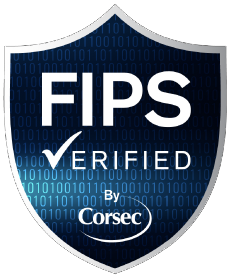CMMC Assessor Field Sheet
You’ll want this for your next assessment.
ComplyUp’s CMMC Assessor Field Sheet includes the complete CMMC Level 2 Assessment Guide, plus fields for your assessment findings. Sort by CMMC Level, Practice/Process, or Domain. Click the Practice/Process Identifier link to jump to the appropriate Assessment Guide content.
The CMMC Level 2 Assessment Guide has been released by the DoD, and it is recommended that both contractors and C3PAO’s use this guide when attempting to reach compliance or conducting assessments. The Assessment Guide, like the model itself, is built mostly from the NIST 800-171 framework. Specifically, the objectives found in NIST 800-171A.
Certified Assessors will gather information and evidence to independently verify that a contractor meets the stated assessment objectives for all the required practices and processes.
According to the guide itself and confirmed to ComplyUp by several C3PAOs familiar with the matter, 100% of the objectives found in the guide must be met in order to achieve CMMC certification:
“This section provides detailed information for assessing each CMMC practice beyond what is provided in the CMMC Model Overview document. The section is organized by domain, level, and then practices. Each practice description contains the following elements:
[…]
Assessment Objectives identify the specific list of objectives that must be met to receive MET for the practice as defined in NIST SP 800-171A”
– CMMC Assessment Guide Level 2 v2.0, page 20
ComplyUp’s CMMC Assessor Field Sheet will get you familiar with these objectives and help you centralize your assessment findings.
1. CMMC Assessment Guide Content
Copyright 2020 Carnegie Mellon University and The Johns Hopkins University Applied Physics Laboratory LLC.
This material is based upon work funded and supported by the Department of Defense under Contract No. FA8702-15-D-0002 with Carnegie Mellon University for the operation of the Software Engineering Institute, a federally funded research and development center and under Contract No. HQ0034-13-D-0003 and Contract No. N00024-13-D-6400 with The Johns Hopkins University Applied Physics Laboratory LLC, a University Affiliated Research Center.
The view, opinions, and/or findings contained in this material are those of the author(s) and should not be construed as an official Government position, policy, or decision, unless designated by other documentation.
NO WARRANTY. THIS MATERIAL IS FURNISHED ON AN "AS-IS" BASIS. CARNEGIE MELLON UNIVERSITY AND THE JOHNS HOPKINS UNIVERSITY APPLIED PHYSICS LABORATORY LLC MAKE NO WARRANTIES OF ANY KIND, EITHER EXPRESSED OR IMPLIED, AS TO ANY MATTER INCLUDING, BUT NOT LIMITED TO, WARRANTY OF FITNESS FOR PURPOSE OR MERCHANTABILITY, EXCLUSIVITY, OR RESULTS OBTAINED FROM USE OF THE MATERIAL NOR ANY WARRANTY OF ANY KIND WITH RESPECT TO FREEDOM FROM PATENT, TRADEMARK, OR COPYRIGHT INFRINGEMENT.







